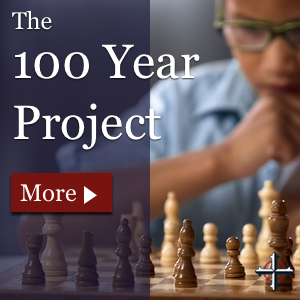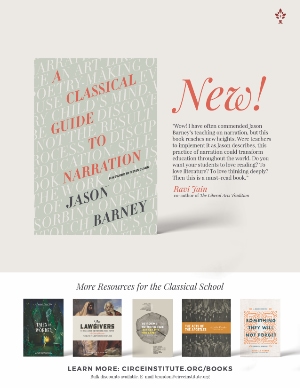Fall 2015
Help for the New SAT
by Julia Wright
Tips for classical Christian students on
taking America’s college entrance test

Links of Interest
College Board | Khan Academy Practice Test | Download the New Daily Practice App | Complete Guide to the New SAT | Forbes.com – 3 Reasons You Shouldn’t Take the New SAT
You’re not alone if you find yourself suddenly thrust into the college testing game. But there’s good news: classical Christian students are uniquely prepared for the SAT.
The PSAT/SAT is undergoing a major update over the next year. Here’s what every parent needs to know.
Why change the SAT?
The College Board (www.collegeboard. org) made the decision to significantly revise the SAT after several years of declining numbers of students taking the SAT.
At Huntington Learning Center in Boise, Idaho, the test prep company I own, we noticed some important factors influencing the test. I noticed that so many students nationally were able to get 800s (a perfect score) in writing and math that if a student missed only one problem he could lose up to 80 points. This automatically dropped his score to 720 and affected his ability to apply to some highly selective college programs.
The bell curve was broken. The College Board had to respond.
The College Board emphasizes that the new test moves toward skills. The goal is to make the test easier and less tricky. Further research reveals changes in the goals of the test—especially in its preference for real-world and classroom knowledge vs. general reasoning skills and “obscure” vocabulary.
What does the new SAT look like?
The math section is about real world applications and problem solving with an emphasis on algebra. The test makers present “realistic” problems and expect students to work through a model of some sort to develop a solution. There are a few straightforward math problems, but those problems tend to be in more advanced algebra. This will be a good turn for problem solvers.
It concerns me that there are Algebra II level problems on the PSAT. I expect that to change. The level of math is much higher now on both the PSAT and the SAT. However, if students hone good test-taking techniques and problem-solving strategies, they will do well regardless.
The language portion requires more evidence and context-based analysis. You won’t identify single vocabulary words or analyze stand-alone sentences. You’ll identify words and fix sentences within a context.
In a presentation I recently gave, the question came up, “Which of our values do we need to leave at the door to do well on this test?” Further probing revealed a concern that conservative, Christian values would be at a disadvantage on the new test.
Values don’t play a role in determining correct answers. Experiences, however, may. If children are isolated from other cultural experiences or worldviews it may be difficult for them to determine motive, tone, and mood when they read a piece written about or by someone quite different from themselves.
Keep in mind that confidence along with resiliency plays a huge role in problem solving. These are two characteristics I notice that classical Christian education instills in the students I mentor. These qualities can be vastly improved with practice (see below).
In my experience, the new skills being tested on the revised SAT simply aren’t being taught in our local public schools.
SAT vs. ACT?
So, which test to take? For the class of 2017, the ACT is worth serious consideration. All universities accept the ACT for admissions. Some universities are shying away from the redesigned SAT until the class of 2018 at the earliest.
Whether this proves to be the final word is anyone’s guess.
The ACT rewards quick decision making, analysis, logic, and ability to read tone. Thirty years ago, the ACT might have had a stigma of being a lesser test. Not anymore.
Forbes.com weighs in on this question, concluding that the SAT is really just becoming another ACT. Visit www.classicaldifference.org for this and other links.
How to prepare your students for the new SAT
The best way to prepare is to take practice tests. Khan Academy (https://www. khanacademy.org/sat) is now working in partnership with the College Board to provide free online practice tests.
On September 30, 2015, the College Board launched a free student SAT practice app called Daily Practice for the New SAT which allows students to fill out a paper SAT answer sheet and scan it to get their scores instantly. To download the app, visit iTunes and search “Daily Practice for the New SAT.” Visit www.ClassicalDifference.com for more information.
If your student takes a practice test and you notice problem areas, I believe seeking help from a learning center like Huntington is your best bet for two reasons.
- Along with keeping up with the published news, Huntington and other reputable learning centers do their own research. Familiarity with the various exams and our ability to improve student performance is part of our business. We have to know.
- After analyzing practice test results, we review them face-to-face with students, talk to parents, and target training to address individual strengths and weaknesses.
There are many questions and much misinformation out there about the new SAT and PSAT that a knowledgeable test prep company can clarify. So, if you have questions and want real, unbiased answers, this is place to get them. A phone call is free and can provide valuable information.
What about grammar school?
The sad thing for most families in America is that preparation starts in elementary school. Waiting until high school to put your child in a challenging educational environment is not going to set him up for success.
Students need to understand why an author used a specific technique or have the experience to view the world through someone else’s eyes or historical perspective. Too many times teachers ask, “What would you do?” or “How would that make you feel?”
For 30 years, teacher colleges have been emphasizing how to engage students and make the material more relevant for them—how to make school fun. In doing this, we have lost the discipline it takes to understand motives that may be different from our own.
Classical education embraces original source material. Evidence-based learning is at the center of classical curriculum development. Asking the question, “What in the text caused you to draw that conclusion?” will help with more in-depth analysis of language.
The College Board
The information below is taken directly from the College Board’s Teacher Implementation Guide.
The EvidenceBased Reading and Writing Section of the SAT comprises the Reading Test and the Writing and Language Test. Key elements of both tests include:
• the use of a specified range of text complexity aligned to college and career readiness levels of reading;
• an emphasis on source analysis and use of evidence;
• the inclusion of data and informational graphics, which students must analyze in conjunction with text;
• a focus on words in context and word choice for rhetorical effect;
• attention to a core set of important English language conventions and to effective written expression; and
• the requirement that students work with texts across a wide range of disciplines.
From what I know, this could have been taken from the curriculum guidelines for almost any classical school.
There is no question in my mind, based on my experience, that classically educated students will have an advantage on the Reading portion of this test.
When are the tests offered?
PSAT is only offered once a year. Each school determines which one of two possible dates to offer it. The ACT and SAT are offered several times a year approximately every other month on alternating months except summer—ACT in December, SAT in January, ACT in February, etc.
When should you take the tests?
We recommend anytime in the junior year. Look at the calendar, find two consecutive test dates, and plan to take it those two dates.
When should you start studying?
This depends on the student. We have some students start in their sophomore year and make unbelievable, dramatic increases. One student went from 18 to 32 on the ACT and was offered appointments in all the military academies.
Our PSAT students typically prepare either the summer before their sophomore year or the summer before their junior year. In house, we plan on three months of studying, four times a week, twice in our center, twice at home.
When are most college applications due?
Some early decision applications are due in October. Some priority applications are due in November. January or February of the senior year is the more common priority date. Some state schools accept regular admission applications all the way up to August after graduation.
How far in advance of college application due dates should students take the ACT/SAT?
You really need to work out a calendar with the dates for your college choices. Essays are really important so you don’t want to be working on applications, essays, ACT/SAT preparation, homework, and senior pictures all at the same time.
That is why we recommend achieving your target ACT/SAT score in your junior year. We also recommend that you write a couple of sample, typical essays in the summer before your senior year to ease the burden in the fall.
How do you register for the tests on your own?
You can register at collegeboard.org or at act.org for the SAT and ACT respectively. The registration deadlines are a month ahead of the test date.
How often can you retake a test and how much do they cost?
SAT is $52.50, and ACT is $38 or $54.50 if you do the essay. You can request a copy of the test and answers for $20 which I highly recommend. You can take the tests anytime they are offered. Personally, even knowing the tests as well as I do, I would plan to take them three times.
© The College Board













